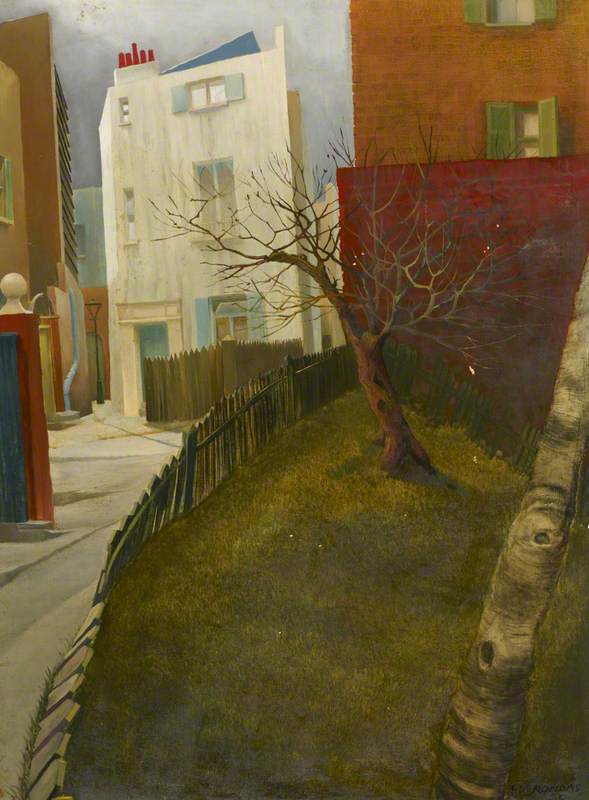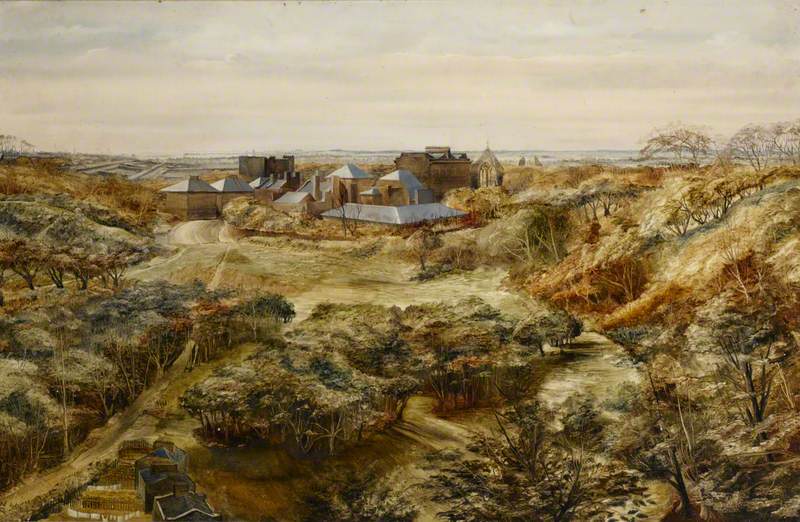Painter, architect and teacher, born and died in Brussels, Belgium, the details of whose life vary according to accounts, including his own. In essence he was the son of a civil engineer and had an English mother. Studied singing, then after qualifying as an architect in Paris Rondas (pronounced Rondass) practised in the Belgian Congo, but returned to Paris in 1931 and took up painting. Rondas studied at L’École des Beaux-Arts and reportedly at the Slade School of Fine Art. In Paris he worked with Dufy, became disciplined in neglected techniques while doing restoration at the Louvre and assisted the stage designer Christian Bérard. After briefly serving in the Belgian Army at the outbreak of World War II Rondas was evacuated at Dunkirk and served in the British Army.
Read more
He was to spend most of his painting life in England. He was a reluctant teacher in art schools in Nottingham and Croydon; designed for the textile firm Jacqmar; completed a mural in the Johannesburg Post Office Tower restaurant; and did 12 pictures for the 1972 Sabena airline calendar. Rondas was both a Surrealist and a painter of London suburbs in a realistic style, but transformed by an atmosphere of unease. Solitude, anguish and cruelty were preoccupations. During his life Rondas showed extensively in Europe and America. He had a first exhibition at Galerie Le Centaure, Brussels, 1938. Others included Galerie d’Egmont, Brussels, and Ben Uri Art Society, both 1961; John Whibley Gallery, 1966; and Galerie Rutzmoser, München, 1987. Waterloo Museum in Belgium and Ben Uri hold examples, which were also acquired by the collector of Surrealism Edward James. He sometimes exhibited as William Rondas.
Text source: 'Artists in Britain Since 1945' by David Buckman (Art Dictionaries Ltd, part of Sansom & Company)


